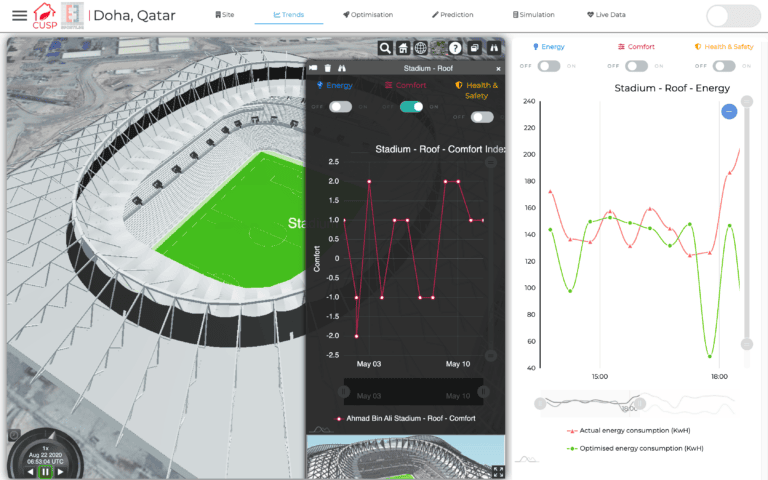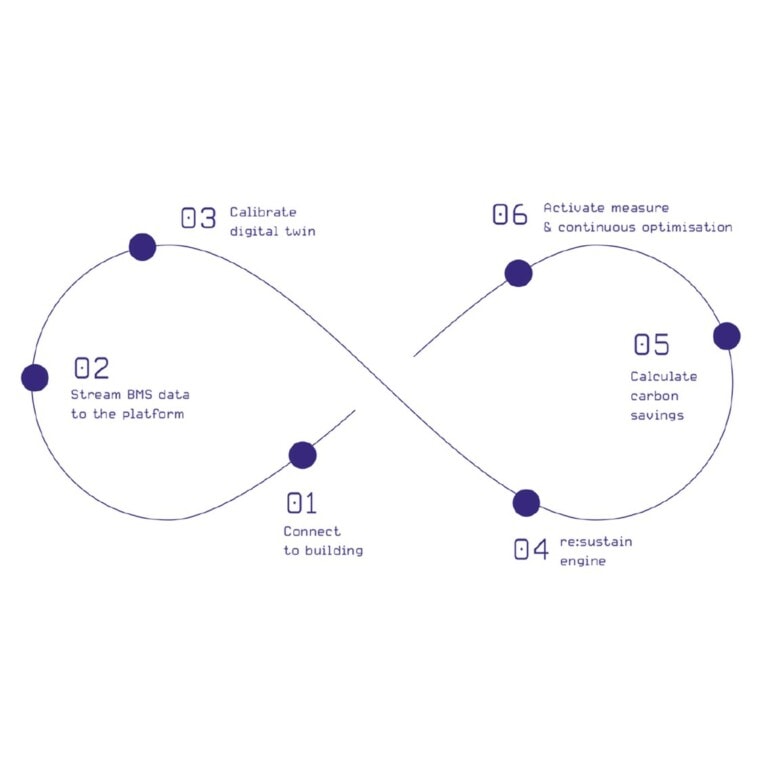Digital twin and building analytics platform

Problem Addressed
One of the major sustainability challenges faced by real estate portfolios is high energy costs and inefficient energy usage, which can have a negative impact on both the environment and operational expenses. Additionally, the lack of actionable energy data makes it difficult for real estate professionals to identify areas of high energy consumption within their assets. Without the ability to track and manage carbon emissions and sustainability metrics across multiple assets, real estate professionals can struggle to validate progress toward their sustainability goals.
Case Study
Para was deployed at a 47,000 m2 office building in Cairo Smart Village, Egypt, to reduce energy consumption and achieve sustainability compliance. The deployment included key modules for energy intelligence, asset management, sustainability, and occupant wellbeing.
The client faced several challenges: inefficient operations leading to energy waste, siloed data systems, an inability to track compliance with established sustainability goals, difficulty obtaining and accessing asset information, and poor indoor air quality.
Key features implemented included:
Energy Intelligence: Para extracted energy reports and cross-checked utility bills, provided virtual metering for HVAC consumption, established an energy information system aligned with ISO 50001, and enabled real-time occupancy-driven energy optimization.
Asset Management: Predictive maintenance through fault detection and diagnostics was employed, and a BIM-based central asset data repository (common data environment) was created.
Sustainability: Para managed and monitored carbon emissions segmented across Scopes 1, 2, and 3, enabled compliance tracking, and streamlined environmental reporting processes and emissions management.
Occupant Wellbeing: Environmental comfort metrics such as air quality, temperature, and noise were tracked, and smart alarms were generated in line with industry standards.
The deployment resulted in significant improvements: a 28% total energy savings, a 9/10 occupant comfort score (LEED O+M), a 6% increase in PV general output, and a 5% additional avoidable cost identified by fault detection and diagnostics. These results demonstrated clear energy savings, the ability to benchmark and set sustainability goals, and an improvement in occupant wellbeing through the tracking and monitoring of indoor climate and air quality.
Facts and Figures
This page presents data, evidence, and solutions that are provided by our partners and members and should therefore not be attributed to UKGBC. While we showcase these solutions for inspiration, to build consensus, and create momentum for climate action, UKGBC does not offer commercial endorsement of individual solutions. If you would like to quote something from this page, or more information, please contact our Communications team at media@ukgbc.org.
Related
Building Optimisation Software Using AI and Digital Twins

BMS agnostic building optimisation

Energy Monitoring Platforms for Commercial Buildings

Building and portfolio optimisation SaaS

